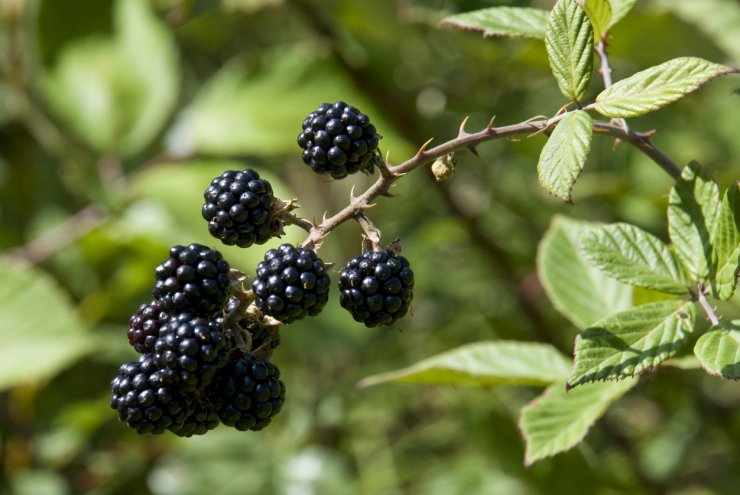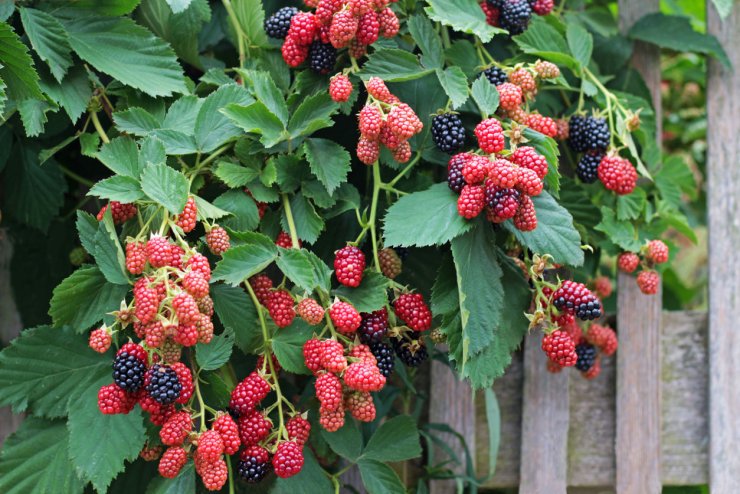
Thorny blackberry plant.
Blackberries grow on stems that are called canes, and are divided into three basic types depending on the growth habit of their canes. All of these types of blackberries have perennial roots that survive every year, but biennial canes. Canes are initially called primocanes, and they will only grow fruit in the second year—when they’re called floricanes—and then die back. Meanwhile, new primocanes are growing in that second year that will grow fruit in the third year, and so on.
The three types are:
Erect (thorny) blackberries
These grow as a bush and are largely self-supporting, though you’ll want to contain them from taking over the garden. This type has stiff arching canes that support themselves, though trellising makes them easier to handle and prune.
If you prune erect primocanes in the summer, they will branch out and increase fruit production the following year. Beware of suckers growing from the roots, spreading out around your garden.
This type of blackberry produces fruit with relatively large seeds. Flavor and aroma are not considered as intense as in trailing blackberry cultivars.
Erect or semi-erect (thornless) blackberries

Semi-erect Thornless Blackberry.
These have a bushy habit but again may benefit from some trellising when heavy with fruit, especially the semi-erect varieties.
Semi-erect blackberry plants are thornless and produce vigorous, thick, erect canes from the crown. No primocanes are produced from the roots. Prune primocanes in the summer to encourage branching and increase fruit production on what will become next season’s floricanes.
Semi-erect blackberries generally produce a higher yield than trailing or erect types. Fruit quality is similar to that of erect blackberries.
Trailing (thornless) blackberries

Trailing blackberries
These always require trellising, as their canes have, like the name implies, a long, trailing habit. They produce vigorous primocanes from the crown of the plant rather than roots. Second year floricanes produce long-shaped fruit with relatively small seeds and a highly aromatic, intense flavor.
This type of blackberry is not hardy in northern climates, experiencing damage at temperatures of 20 degrees F or below.
Hybrids
There are also blackberry-raspberry hybrids, in which the receptacle comes off with the fruit, meaning that they’re considered a type of blackberry. These include popular cultivars such as Boysen (boysenberry), Logan (loganberry), and Tay (Tayberry).
What kind of blackberries are most suitable for your garden? Please share your thoughts with us.


 Previous
Previous


Pictures of the different canes would be very helpful as I can’t tell what cane is which on my current plant and worry about trimming any of it
I have thornless kind. Last year I pruned incorrectly and I didn’t have very many berries. Now I’m afraid to trim!!!
It took mine 3 years before they recovered from my trimming.lol